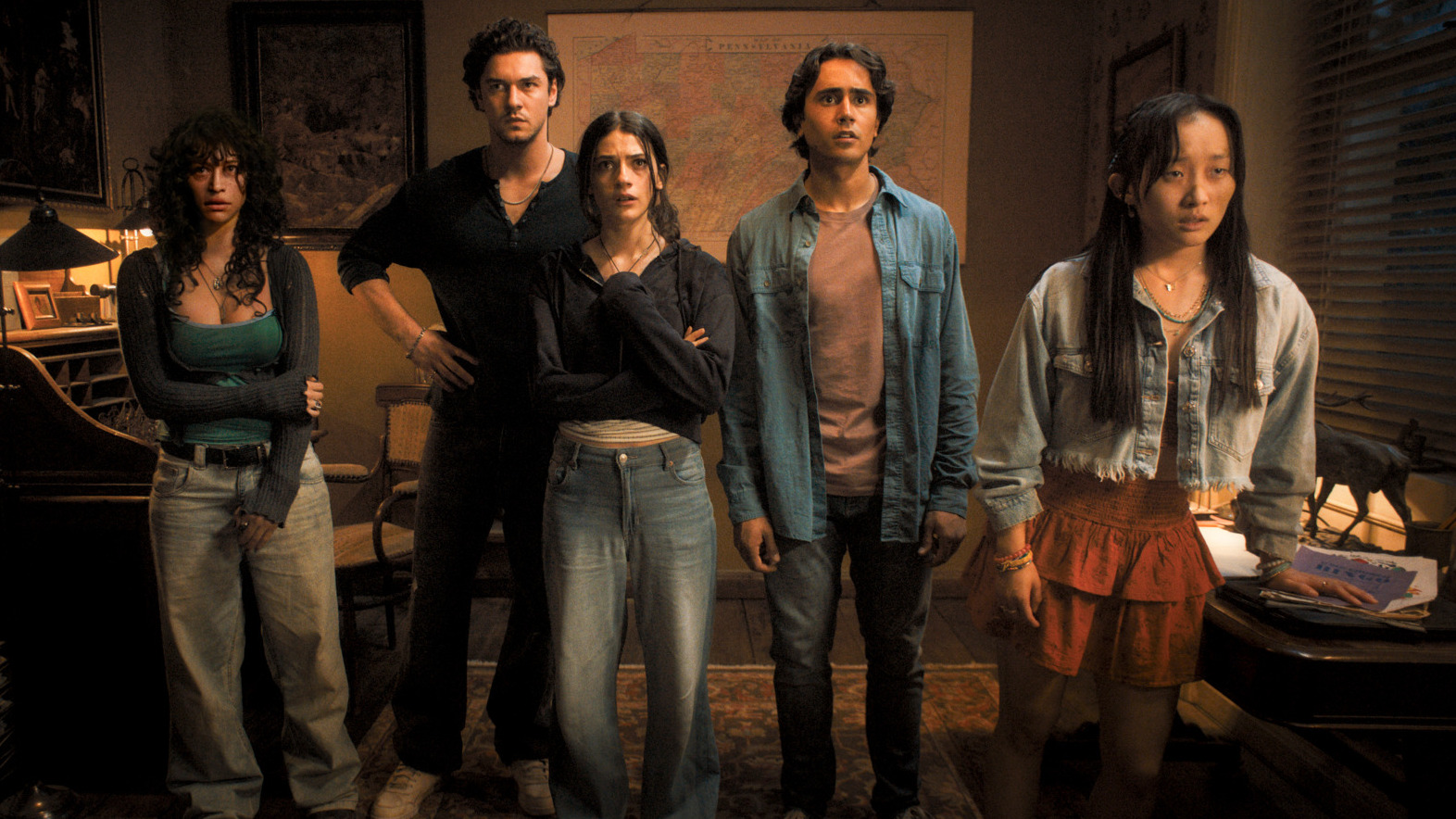Director: David F. Sandberg
Writers: Gary Dauberman, Blair Butler
Stars: Ella Rubin, Odessa A’zion, Michael Cimino
Synopsis: A group of friends trapped in a time loop, where mysterious foes are chasing and killing them in gruesome ways, must survive until dawn to escape it.
David F. Sandberg’s adaptation of Supermassive Games’ Until Dawn is an adaptation in name only. Instead of directly transposing the 2015 interactive movie of the same name to the screen, and its “butterfly effects” to fit cinematic conventions, Sandberg and writers Gary Dauberman and Blair Butler create an original story set within the world of the game. That would’ve been fine if the story actively expanded upon the mythology that Larry Fessenden and Graham Reznick (unlike Sony, who did not credit the writers of the game during the end credits, I am giving them their proper recognition) built upon in the video game. However, it chooses to ignore all of that completely and instead make a conventional time loop movie that fundamentally misunderstands the core mechanics of terror at the heart of Until Dawn.

The only tangible connection we have to the video game is the appearance of Peter Stormare, who reprises his role as Dr. Alan J. Hill, and traps a group of teenagers inside an endless time loop that forces them to relive their deaths over and over again, unless they survive the evening until dawn and break the loop. That’s about as far as I’ll go in describing what happens, because, to Sandberg’s credit, the movie does have some neat connections to the game within that specific story itself, and how each death brings them closer to something they do not want to become.
That said, transforming the “butterfly effect,” which meant that players could make critical choices at pivotal turns in the game that would affect the story, with a time loop, may be the single most significant mistake that entirely sinks this supernatural horror movie. Of course, making an interactive live-action film is complicated, as illustrated by David Slade’s Black Mirror: Bandersnatch, which makes it understandable for Sandberg to want to stay away from doing something like this on a large scale. Yet, in not wanting to stage sequences that showcase how each choice the protagonists make affects their survival of the time loop, the movie becomes nothing more than a repetitive series of over-the-top deaths with very little thrills, and little to no tangible connections to genuinely titillate fans of the game.
Sure, the use of nifty practical effects to visualize the most agonizing end for our protagonists is certainly fun, notably a sequence that sees them violently react to the water they’ve drunk in the most explosive fashion. It certainly has the most creative use of blood I’ve seen since Coralie Fargeat’s The Substance, but even the funniest – and most unexpected – sections of the movie become increasingly tiresome when they’re frequently repeated, diminishing the intended effect they had when first employed. What remains is a series of haphazard connections to the video game, which seem to have been added at the last minute instead of being integral to its plot development.
Without giving much away, the integration of these elements is only there for the audience to artificially point and clap at the screen when they recognize something they’ve heard from the video game. There’s no tangible desire for Sandberg to genuinely expand upon the mythos of its creatures, or in the repercussions of a “butterfly effect.” It’s a time loop movie that has Until Dawn connections in it. If you removed those altogether, it wouldn’t make a difference in the plot, and in how the story eventually wraps up, fundamentally misunderstanding the core concept of Fessenden and Reznick’s approach to horror, not only in the cinematic aesthetic it appropriates, but also through its ludonarrative.
Throwing all of that out of the window in making an Until Dawn movie seems as pointless as the idea of making a film based on what is essentially a movie, where the subtle choices you make affects the overall story. It also doesn’t help that its ensemble cast, comprised of burgeoning stars, can’t hold weight to the shoddy material they’re given, often producing unintentional bouts of hilarity rather than imbuing them with the same emotional textures the protagonists in the video game had. Even sequences with significant dramatic power fall flat, as they contain more than one jumpscares to keep the viewer on edge instead of letting the drama speak for itself.

The end result is sadly insulting for gamers who have spent their time examining the lore beneath the actual game, and doesn’t feel like it holds as much reverence to the source material as Jared Hess did while making A Minecraft Movie. That’s something I never expected to say, since Sandberg does hold a formal edge over his contemporaries, and he does possess great skill in crafting neat transitions, particularly one at the top of his movie. But Hess understood something that Sanderg sadly doesn’t. When making a video game adaptation, of course you want to appeal to a broad audience, but your primary targets are the people who have played it and hold great appreciation for the game. That’s why Minecraft did so well – it understood that it specifically needed to target the gamers first before anyone else. If you fail the fans at the top of your Until Dawn film, who is this offshoot for?





